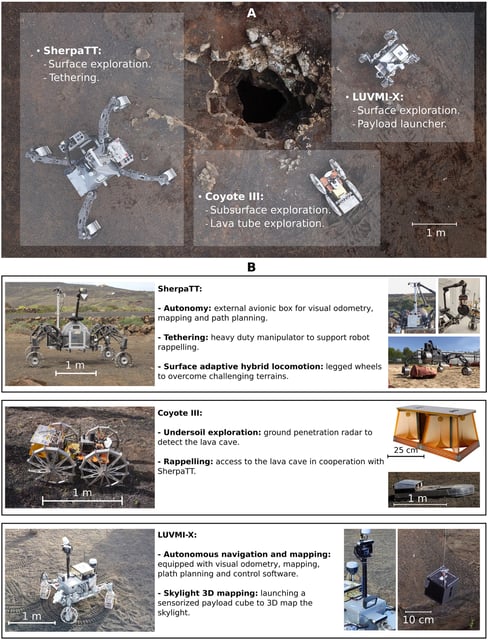Overview
- A 21-day, four-phase campaign in a Lanzarote lava tube saw two rovers scout and map the entrance, deploy a sensorized cube into a skylight and rappel a smaller rover 235 meters underground to generate a 3D map
- Robots operated cooperatively and autonomously in complete darkness, demonstrating the feasibility of multi-platform exploration in subsurface caves analogous to those on the Moon and Mars
- Ground-penetrating radar accuracy dropped in damp sections of the cave, mapping sensors faced interference and the absence of ground-truth data hindered map validation
- Incomplete autonomous navigation and intermittent inter-robot communication were identified as major obstacles to untethered extraterrestrial operations
- Published in Science Robotics, the study calls for advances in sensor fusion, fault-tolerant autonomy algorithms and in-situ validation strategies before deploying robots into planetary lava tubes

